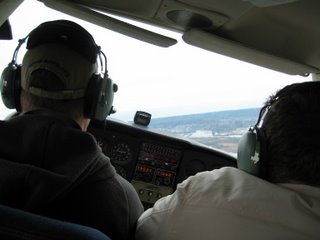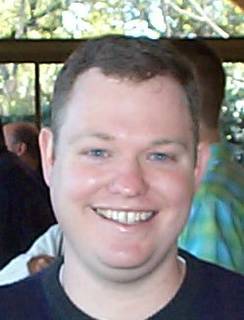VFR To Astoria
In a previous job, I had to travel a lot. Once, I was stuck in Denver as United tried to find a crew to fly our plane. I thought to myself that even I could run an airline better than United. It turns out I can't.
The plan was to fly to Astoria with two of my friends from Borland. It was the first VFR weekend day in Vancouver in two or three weeks. The weather was forcasted to turn ugly the following day and the rest of the week, so basically, this was going to be our only chance to fly.
I get a call about an hour before I'm supposed to get the airplane. Apparently, the previous renter drained the battery trying to start the plane. Thankfully, the mechanic was willing to come in and charge the battery back up. When I arrived at the airport, the mechanic was charging the battery in the shop. The flight desk told me that I should still have the plane on-time. That's when they realized that the previous renter, who took off in another plane, had the key. That's right, the key to our plane, was flying somewhere over Oregon or Washington. Just a note to fellow renters: It's really annoying to not be able to fly because the previous pilot didn't return the key. Please return the key to the plane when you're done.
After an hour wait, the pilot with our key finally returned it to the flight school (without an apology, by the way). Fortunately, we had enough daylight to make the trip. The trip itself went fine. The only scary part was when, on the return leg of the trip, I listened to weather at Pearson (our home airport). I thought the report said that the clouds were at 1000 feet, which is minimal ceiling for VFR flight. I started thinking about alternative landing spots. My co-pilot, who is a student pilot, must have seen the gears cranking in my head when he said he heard the clouds at One-Zero Thousand (10,0000 ft.) Turns out he was correct.
Here are some pictures taken from the trip:
 This is Pearson Field as we depart. The yellow and black checkered roof is the Pearson Air Museum. To the right of the museum is Fort Vancouver.
This is Pearson Field as we depart. The yellow and black checkered roof is the Pearson Air Museum. To the right of the museum is Fort Vancouver. The occupants of the spacious 172 showing off their best side.
The occupants of the spacious 172 showing off their best side. I think this is when we were in the pattern in Astoria.
I think this is when we were in the pattern in Astoria. On final on Runway 8 at Astoria. And, no, I did not photoshop this picture. I really was on glideslope!
On final on Runway 8 at Astoria. And, no, I did not photoshop this picture. I really was on glideslope! We found this plane parked on the tarmac at Astoria. It looked like the engines were in working order. (Meaning there was fresh oil on the ground beneath them.) I'll have to look up to see what kind of plane it is. Whatever it is, it looks like a lot of fun to fly.
We found this plane parked on the tarmac at Astoria. It looked like the engines were in working order. (Meaning there was fresh oil on the ground beneath them.) I'll have to look up to see what kind of plane it is. Whatever it is, it looks like a lot of fun to fly.

